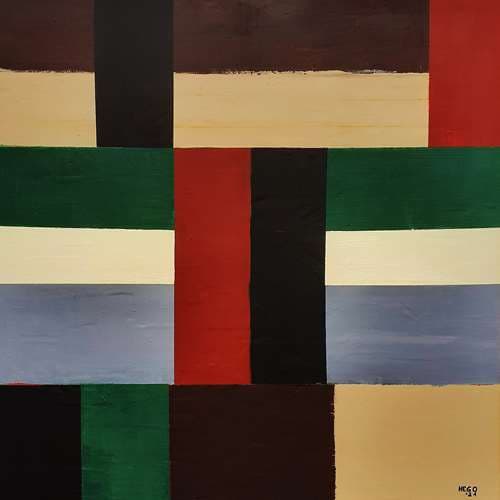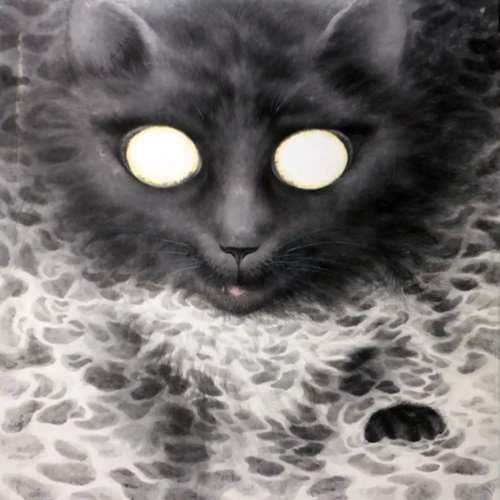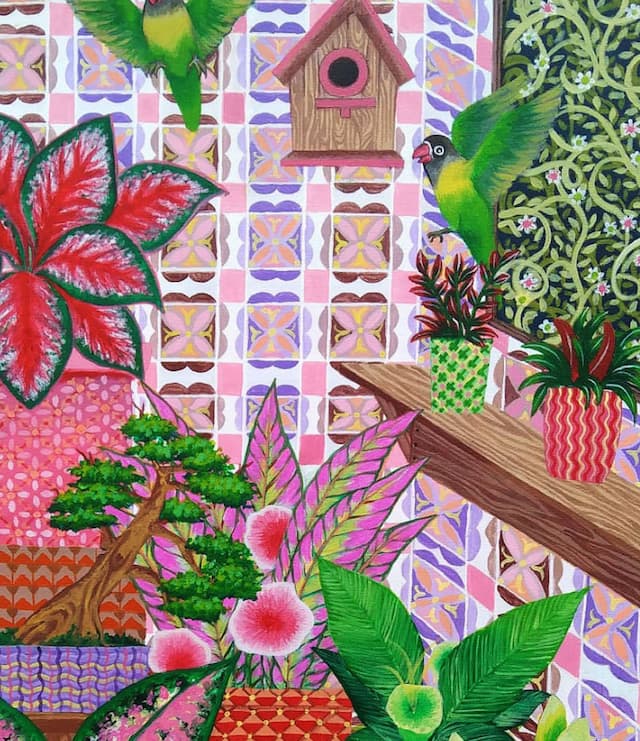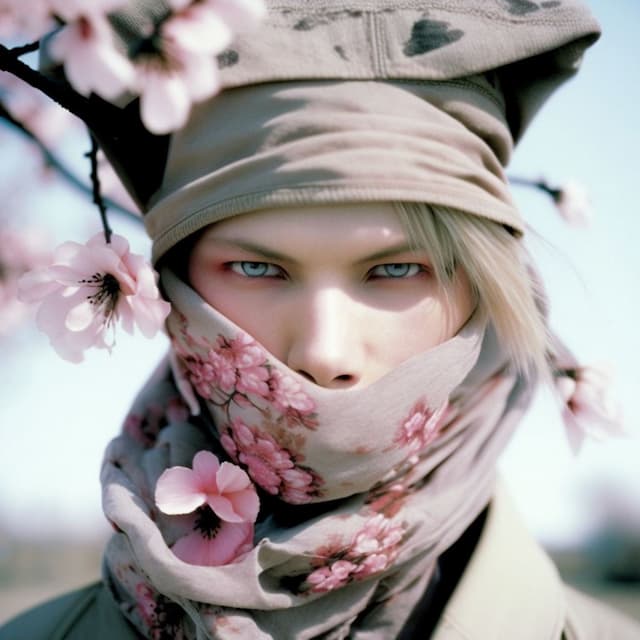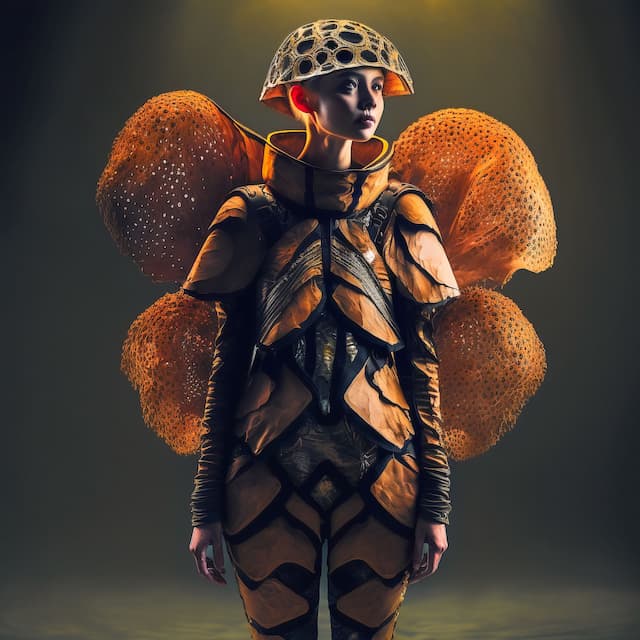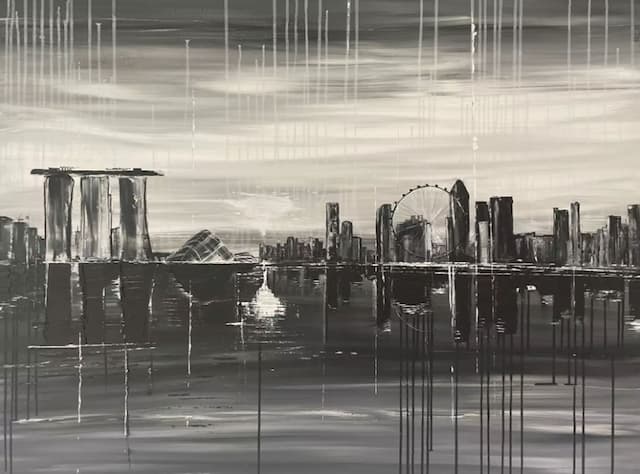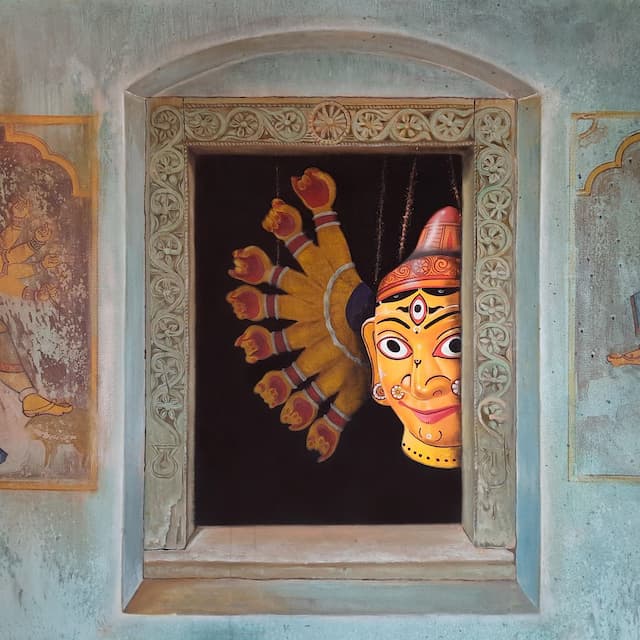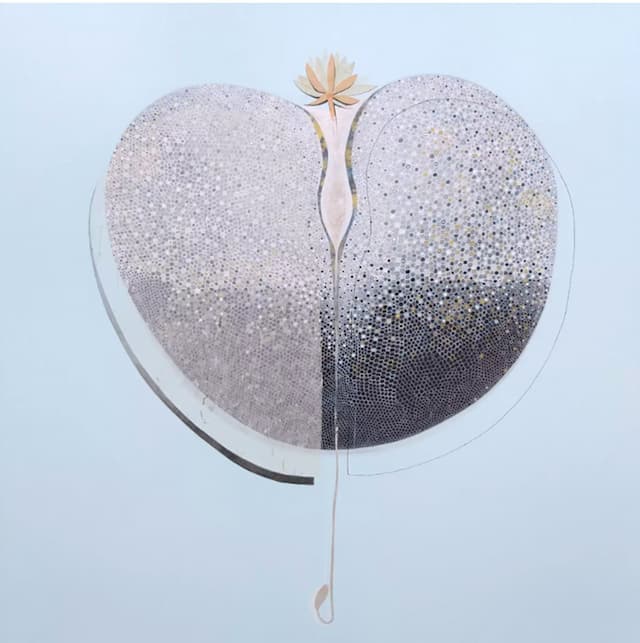Subscribe for our newsletter to have the latest stories and curated art recommendations delivered straight to your inbox
Three things you can do with your Digital NFT Art collection
RtistiQ
 Like
Like comments
comments SAVE
SAVENFTs have become extremely popular in a short period of time. Crypto enthusiasts and collectors are looking for opportunities to hold the rare immutable NFT assets. But many crypto newcomers don’t quite know what to do with NFTs after they buy them and it is sitting in their crypto wallet.
This article aims to explain the popular uses of Art NFTs that you might have bought on our platform RtistiQ. There are many different types of NFTs and what you can do with an NFT is largely determined by the type of asset you have purchased.
Essentially a non-fungible token, or NFT is a form of digital asset that is unique and uses blockchain to record its ownership status. NFTs can only have one official owner at a time, and if you have purchased an artwork on RtistiQ, you are the lucky one to own it. This token is now secured by the blockchain - no one can modify the record of ownership or copy & paste a new NFT into existence.
So does it come with copyright transfer too? No, an NFT is not to be confused with copyright – an NFT gives you a proof of ownership. There is no copyright transfer, unless explicitly mentioned. You get ownership of the artwork, with the licensing terms encoded as metadata. Some creators will let you use your copy only for personal use, while others might permit commercial uses. The ownership of the unique token has been transferred to your wallet via your public address, proving that your copy of the digital file is the original one. Your private key is the proof-of-ownership, and the content creator’s public key serves as a certificate of authenticity for that particular digital asset.
So what to do with the NFTs now that you have bought them? Depends how you want to be involved, but you have the following three main options.
- Hold your ‘Collectible’ and add it to your collection
Art NFTs are great ‘collectibles’. Just like paintings that you display in your home are unique pieces of art without any copies, an art NFT is a digital form that is unique. You can enrich your visual experience with it and it can gain value over time. This makes them potentially a great investment. The more rare NFTs you have in your collection, the more exclusive it becomes.
2. Display the NFT in a digital or physical gallery, or in the Metaverse
NFTs provide intrinsic and social status value which can be showcased in
- NFT displays and video frames.
- NFT display apps on iPhones and tablets.
- Inside the metaverses – Decentraland, Cryptovoxels, etc.
- On the wall - printed and framed (if the contract permits).
An NFT Display is a unique and snazzy way to display your asset with a certificate of ownership alongside it.
- An NFT display is connected to your wallet, to prove ownership of your NFT.
- It offers high quality visual and audio output, and comes with aesthetic frames and swivel mounts, and state-of-the-art features like gesture and voice controls
- Netgear’s Meural Canvas II, Canvia – Digital Art Canvas, BlockFrame NFT – Digital NFT Display Frame, Samsung – The Frame, Lago – The Frame and Blackdove Digital Canvas are a few of the trending options.
3. List your NFT for sale in a secondary marketplace and resell
You could resell your NFT to try and turn a profit when the time is right. You have full right to list your NFT for sale on an NFT marketplace such as OpenSea, Rarible, Nifty Gateway, Larva Lab, Axie Infinity, SuperRare and more. Once you complete your listing on the marketplace, your NFT will be available for purchase on it. You can promote the sale to potential patrons via your website or social media channels. Do note that there are associated gas fees that might be incurred in case of making changes or removing your listing. Some creators may demand a royalty every time someone resells the piece. In that case royalties are built into the NFTs.
In the near future, RtistiQ expects the infrastructure that supports NFTs to catch up even more and there will be further use cases for the emerging technology. Facebook renamed themselves to Meta last year, Microsoft joined the metaverse hosting immersive meetings with avatars…and many other companies are joining the boom. With the NFT ecosystem growing, it looks like NFTs are here to stay, dominate and slay.
Explore our Curated Collections
SIMILAR ARTICLES

What is Digital Fashion? Is it Art and How to Shop for Digital Fashion?
Introduction The fashion industry’s incessant transition into the digital landscape is a perfect example of how lines between the digital and physical worlds are blurring. The advent of Metaverse and Web 3.0 has pushed fashion designers to showcase their IRL collections through digital clothing platforms — providing unique ways for people to interact with fashion trends online. Impressive, isn’t it? Well, in this post we will get acquainted with the world of “Digital Fashion” and share ways you can shop for it in 2023! So let’s cut to the chase and dive right in, shall we? What is digital fashion? Digital fashion allows consumers to try a virtual dress that has been digitally adapted (virtually fitted) to their bodies through “Virtual Try On” technology powered by Augmented Reality. The idea is to build a fashion product or culture in which the digital dress will become as exclusive as the real one. Imagine gifting someone a dress that doesn’t physically exist. That’s digital fashion for you. It successfully represents the link between virtual reality and tailoring, but shouldn’t be boiled down to just a glorified version of an Instagram filter. Is digital fashion an art? Yes, digital fashion is an art. It is essentially an extension of a designer’s digital illustrations. But, digital fashion is more than simply an art gallery. It is an opportunity for fashion designers to showcase their creativity by using digital fashion platforms that allows them to develop more revenue streams. After all, fashion designers can turn their digital outfits into Non-Fungible Tokens (NFTs) and trade them using blockchain. How to shop for digital fashion? Now that you know how digital fashion functions, it’s time to get in the game! One of the best ways to shop for digital fashion is through digitalfashion marketplaces. These online marketplaces foster cyber couture and push design boundaries — redefining the world of fashion as we know it. Here are some of the renowned digital fashion houses and marketplaces worth mentioning in the post. Feel free to check them out as the digital fashion products on them are exciting enough to captivate fashion enthusiasts worldwide ● DRESSX ● Replicant ● Auroboros ● DIGITALAX ● The Dematerialised ● Tribute Brand ● XR Couture ● UNXD ● The Fabricant ● Carlings ● Rtfkt ● Happy99 ● Republiqe These digital fashion marketplaces function by using real-time Augmented Reality. Consumers can use their camera phones to try digital fashion products for free. Not just that, consumers will have the choice of transactions when purchasing digital fashion. They can either use “on-chain” or “off-chain” transactions. The former requires users to own a cryptocurrency wallet or open one inside the digital fashion platform, allowing them to turn clothing into a digital asset. The latter involves payment through regular credit cards. Dont miss out on our digital fashion auction taking place between the 26- 29 Jan 2023. Click here and get ready to bid on exclusive items for your digital collectibles. It’s your opportunity to build a spectacular digital wardrobe and collect digital fashion art to show off online! Final thoughts! “Digital Fashion” is still an emerging trend that has the potential to make digital wearables and fashion NFTs more accessible — especially since it is powered by exciting innovations. However, brands need to make more and more consumers aware of the attractive features of digital fashion, more importantly, its affordability. We believe that the meta-closet or digital closet is the way of the future and people will give attention to building a digital wardrobe parallel to building a physical one. Did you find this post helpful? Let us know in the comments. Also, don’t forget to check out other informative posts in the blog!
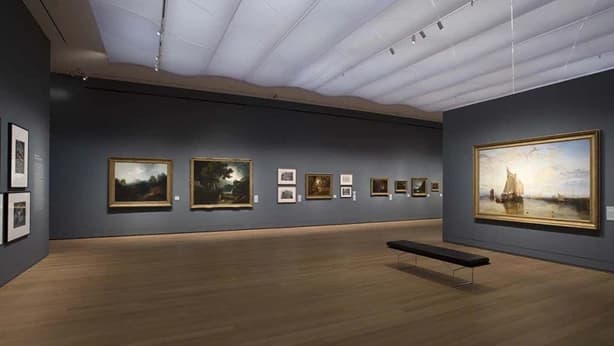
Art Redefined: The Digital Era with Olyvia Kwok-Decani
In a rapidly changing world, the art industry has been profoundly impacted by the digital age and the emergence of millennials as a driving force in shaping its landscape. Olyvia Kwok-Decani, an esteemed expert in the field, provides valuable insights into the pivotal role millennials play in the evolution of art, particularly their influence on art consumption, creation, and the integration of technology. New era in the art market: As we delve into 2023, a significant shift has occurred, with millennials surpassing previous generations in art spending, marking a new era in the art market. The Art Basel-UBS report highlights this trend, revealing that millennials have exceeded boomers in their investment in artwork, leading to a notable increase in sales. Olyvia emphasizes this shift, stating, "Millennials spend four times as much as boomers and double the spending of Gen X." The digital age This has had a transformative shift. Growing up immersed in technology, millennials have wholeheartedly embraced digital art and non-fungible tokens (NFTs) with great enthusiasm. Digital platforms have become fundamental for showcasing and acquiring artwork, fostering a strong sense of community among artists and art enthusiasts alike. Recognizing the significance of these platforms, Olyvia emphasizes, "Social media has emerged as a powerful marketing tool for artists and galleries to engage with the millennial audience, who predominantly consume art digitally." Influence of millennials Artists are adapting their practices to cater to this tech-savvy generation. The integration of digital tools and experiences has become paramount, enabling artists to provide immersive and interactive encounters for their audience. The boundaries between technology and art have blurred, giving rise to innovative forms of expression and exploration. Olyvia notes “that this shift has opened up new avenues for artists to connect with a broader audience and forge stronger bonds within the art community.” Art consumption: Millennials' interest in art extends beyond mere consumption; they are actively leaving their mark as artists. A wave of talented millennial artists has emerged, bringing forth fresh perspectives and themes that captivate the contemporary art scene. Notable names such as Sadie Burnette, Sam Falls, and Lu Yang have garnered recognition for their distinctive approaches, leaving a lasting impact. Millennials prioritize experiences and emotional connections when engaging with art, seeking works that provoke thought and challenge traditional norms. Consequently, politically themed artwork has experienced a surge, as artists utilize their craft to voice opinions and address pressing social issues. Digital engagement Millennials' impact on the art world transcends aesthetics and digital engagement. Olyvia underscores the fact that millennials view art as “enjoyable assets and increasingly consider it a viable financial investment”. Art has become a popular avenue for wealth accumulation among this generation, offering an alternative to conventional investment options. Motivated by financial gains and a desire to support artists, millennials have fuelled the growth of the art market, actively participating in and contributing to the art ecosystem. In conclusion The advent of the digital era has brought about a transformative shift in the art world, with millennials leading the charge. Their profound affinity for technology, quest for meaningful experiences, and financial motivations have redefined the art landscape. From embracing digital platforms to spearheading the creation of immersive art experiences, millennials are reshaping the future of art consumption and creation. As Olyvia Kwok-Decani aptly summarizes, "The millennial influence can be seen in the way art consumption has moved to digital platforms and the innovative approaches artists are taking to engage their audience." With millennials at the forefront, the art world continues to evolve along an exciting trajectory. About The Author Olyvia Kwok Decani Olyvia Kwok Decani has been collecting and investing in art for over 15 years. After graduating from Queen Mary’s University in 2002 with a degree in BSc Statistics, Olyvia opened her first gallery in St. James’s London. With years of experience, alongside in-depth knowledge of the market and an extensive global network, Olyvia continues to be one of the most prestigious and successful individuals in the industry.
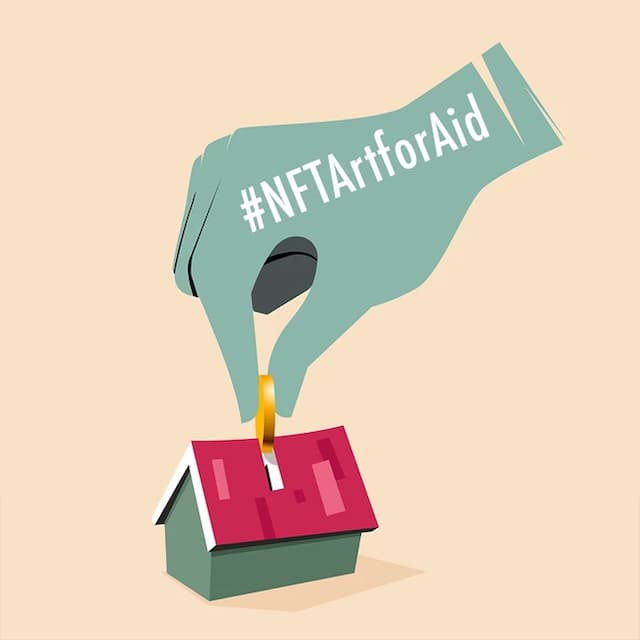
Sending Help to Ukrainian Artists In This Hour of Maximum Need Through A Charity NFT Art Auction
The multifaceted work of Ukrainian artists has been welcomed by art buyers and collectors at home and throughout the world. But the war on Ukraine has ravaged the lives of these talented and driven artists and for the entire country as well. The events taking place feel unreal. Civilians have been forced to flee their homes and leave behind what they own due to this humanitarian crisis. Is seeing it in the news enough to make a difference? We think not. The crisis demands that we stand with the people who are being impacted by it and act in our capacities with a human-centric approach. So many Ukrainian artists have lost their homes, families and everything they had. They have lost the paintings they have worked so hard to create. Their paintings were both sources of inspiration and income, and now these precious pieces are gone or destroyed. The RtistiQ team had announced last week an upcoming non-fungible token (NFT) Drop of Women Artists, but given the current situation, we have decided to postpone it for a few weeks and instead give our fullest support to the Ukrainian artists right now. Art is in our spirit and in our destiny and to support these Ukrainian artists, RtistiQ will be launching a charity NFT art auction of their works. This is a corporate social responsibility initiative auction that will run from 7-10 April. Bidding is open to everyone. There will be no commissions charged to the artists in this auction and the entire mint cost and transaction cost will be borne by RtistiQ. It is urgent and these artists need emergency aid, shelter & supplies, and that’s where the proceeds from this first-ever charity auction of NFT artworks by RtistiQ will go. We at RtistiQ aim to give Ukrainian artists hope through our online art platform. As we raise money for a noble cause, we hope that the world can show it’s support for the Ukrainian artists by participating in this deed. We are ready to step up their art into the digital world so that the world can experience the metaverse first-hand - and in the process raise vital funds for these artists who are now in dire need of them in this particularly critical time.
ARTICLES ON ART MARKET
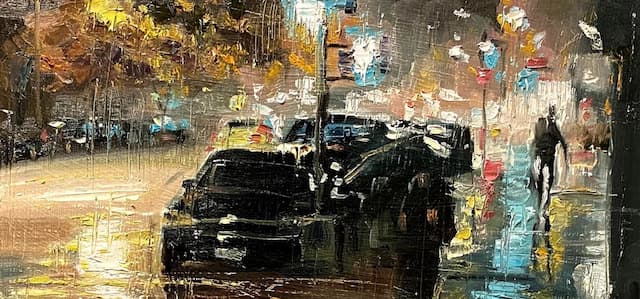
ART MARKET
The Evolution of Landscape or Scenery Painting: A Journey Through Different Periods
Scenery painting, particularly landscape painting, has been a cherished art form for centuries. It offers a window into the natural world, showcasing the evolution of artistic styles, techniques, and mediums across different historical periods. This article takes you on a journey through time, exploring the development of scenery painting and the major creators who left their indelible marks on this genre. From the early depictions of the natural world to modern interpretations, the evolution of scenery painting reveals not only artistic innovation but also the shifting perceptions of nature and its significance in the human experience. Prehistoric and Ancient Art: The Birth of Scenery Painting The earliest examples of scenery painting can be traced back to prehistoric times. These paintings, often found in caves, depict scenes of the natural world inhabited by early humans. These ancient artworks serve as a testament to the human urge to document their surroundings and reflect on the world around them. One of the most famous prehistoric scenery paintings is the Lascaux cave paintings in France, dating back to around 15,000 BCE. These paintings, which include depictions of animals and the surrounding environment, give us a glimpse into the artistic sensibilities of early humans and their connection to nature. As civilization advanced, so did the art of scenery painting. In ancient Greece, artists like Apollodorus and Zeuxis created scenic backgrounds for theatrical performances, a practice that would later influence the development of landscape painting in Western art. The Middle Ages: An Age of Symbolism During the Middle Ages, landscape painting was often subordinated to religious and symbolic themes. It served as a backdrop for religious narratives and was intended to convey spiritual meaning rather than to celebrate the beauty of nature itself. One of the significant developments during this period was the inclusion of landscapes in religious art, particularly in illuminated manuscripts and altar paintings. The landscapes were used as settings for biblical events and served to provide context to the religious narratives. Notable creators of this period include artists like Hieronymus Bosch, who painted landscapes that were rich in symbolism and surrealism. His works, such as "The Garden of Earthly Delights," feature landscapes that are intricate and fantastical, reflecting the religious and moral concerns of the time. The Renaissance: Nature as the Divine The Renaissance period witnessed a significant shift in the way nature was perceived and depicted in art. Artists during this time began to explore the idea of nature as a reflection of the divine, and landscape painting evolved to become an independent genre. Leonardo da Vinci, one of the most celebrated figures of the Renaissance, demonstrated a keen interest in the study of nature. His detailed sketches of landscapes and natural phenomena, such as his "Bird's-Eye View of a Landscape," show a deep appreciation for the beauty and complexity of the natural world. Albrecht Dürer, a German artist, made substantial contributions to the genre with his detailed engravings and woodcuts of landscapes. His works, such as "The Large Piece of Turf," displayed a meticulous observation of plant life and a desire to represent nature as realistically as possible. The Dutch Golden Age: Realism and Symbolism The Dutch Golden Age in the 17th century saw the emergence of landscape painting as a prominent genre. Dutch artists, such as Jacob van Ruisdael and Aelbert Cuyp, played pivotal roles in elevating the status of landscape painting, often depicting the serene and idyllic Dutch countryside. Landscape painting during this period embraced both realism and symbolism. Realistic depictions of the Dutch landscape and the daily life of its inhabitants became a hallmark of Dutch Golden Age art. Artists focused on capturing the effects of light, atmosphere, and weather conditions in their landscapes. Aelbert Cuyp, for example, was known for his warm, golden landscapes bathed in sunlight, often featuring cattle and river scenes. His "The Maas at Dordrecht" is a prime example of the Dutch Golden Age landscape, displaying a tranquil, idyllic scene with a masterful use of light and shadow. Jacob van Ruisdael, on the other hand, painted landscapes with dramatic weather and atmospheric conditions. His work "View of Haarlem with Bleaching Grounds" exemplifies his skill in capturing the shifting moods of nature. The Romantic Period: Nature as a Source of Inspiration The Romantic period in the late 18th and early 19th centuries saw a resurgence of interest in nature, not only as a subject but as a source of inspiration for artists. Nature was seen as a powerful force that could evoke deep emotions and serve as a reflection of the human condition. Artists like Caspar David Friedrich, known for his transcendental landscapes, painted scenes that often featured solitary figures in sublime natural settings. His "Wanderer above the Sea of Fog" is an iconic work of Romantic landscape painting, where a lone figure stands on a mountain peak, gazing out at a mist-covered landscape. The Romantic landscape painters often used dramatic and awe-inspiring landscapes to evoke feelings of awe and wonder. This period marked a departure from the strict realism of the Dutch Golden Age, allowing for more emotional and imaginative interpretations of the natural world. The Barbizon School: Pioneers of Plain Air Painting In the 19th century, the Barbizon School in France had a profound impact on the evolution of landscape painting. Artists of this movement, such as Jean-Baptiste Camille Corot and Jean-François Millet, rejected idealized or romanticized depictions of the landscape in favor of a more direct and realistic approach. The Barbizon artists often worked en plein air, or outdoors, to capture the true essence of nature. They sought to convey the simple beauty of the countryside and the daily lives of rural people. Jean-François Millet's "The Gleaners" is a prime example of this approach, depicting three peasant women harvesting grain in a realistic and unidealized manner. The Barbizon School laid the groundwork for the emergence of the Impressionist movement, which would further revolutionize landscape painting. Impressionism: Capturing the Moment Impressionism, which emerged in the late 19th century, was a groundbreaking movement that redefined how landscapes were painted. Artists like Claude Monet, Pierre-Auguste Renoir, and Camille Pissarro sought to capture the fleeting effects of light and color in the natural world. Claude Monet's "Water Lilies" series is a quintessential example of Impressionist landscape painting. Monet's fascination with the play of light on the water's surface and the changing colors of his garden pond led to a series of paintings that emphasized the transitory nature of the scene. The Impressionists were known for their loose brushwork and the use of broken color to create the illusion of light and atmosphere. They painted en plein air, embracing the spontaneity of nature and the changing conditions of the outdoors. Post-Impressionism: Individual Interpretations Following Impressionism, the Post-Impressionist movement brought forth a diverse range of artistic interpretations. Artists like Vincent van Gogh and Paul Cézanne built upon the Impressionist foundation but sought to imbue their landscapes with personal and emotional elements. Vincent van Gogh's "Starry Night" is a prime example of his unique approach to landscape painting. The swirling, starry night sky and the serene village
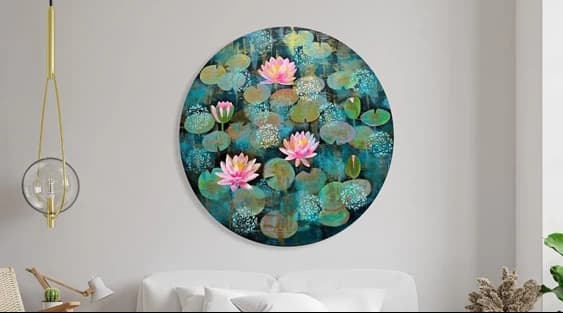
ART MARKET
The Ultimate Guide to Finding the Perfect Art Wall Paintings for Sale
Are you searching for the perfect art wall paintings to elevate your home decor? Look no further! Our ultimate guide has everything you need to know to find that one-of-a-kind masterpiece that will add a touch of sophistication to your living space. We understand that choosing the right wall painting can feel overwhelming with the plethora of options available in the market. That's why we've curated this comprehensive guide to simplify your decision-making process. From understanding different painting styles to selecting the right size and color scheme, our guide covers it all. We'll even walk you through the process of determining your personal taste and aligning it with the atmosphere you want to create in your home. Whether you're a seasoned art enthusiast or a first-time buyer, this guide is designed to help you find the perfect art wall paintings that resonate with your personality. So, get ready to transform your living space into a mesmerizing art gallery with our expert tips and advice. Benefits of incorporating art wall paintings in your home or office Art wall paintings have the power to transform any space, be it your home or office. They serve as a visual expression of your personality, adding depth and character to the walls. One of the key benefits of incorporating art wall paintings is their ability to create a focal point in a room. A well-placed painting can draw the eye and become a conversation starter. It can also help to tie together the various elements of your decor, creating a cohesive and aesthetically pleasing environment. In addition to their decorative value, art wall paintings can also have a positive impact on your mood and well-being. Studies have shown that engaging with art can reduce stress and anxiety, increase feelings of happiness, and even improve cognitive function. By surrounding yourself with artwork that resonates with you, you can create a space that promotes relaxation and creativity. Different types of art wall paintings When it comes to art wall paintings, there is a wide range of styles and genres to choose from. Understanding the different types can help you narrow down your options and find the perfect piece that suits your taste and home decor. One popular style of art wall paintings is abstract art. Abstract paintings are characterized by their non-representational forms and use of color, line, and shape to create a visual language. They can add a sense of energy and intrigue to a space, and their versatility makes them suitable for a variety of interior design styles. For those who prefer a more traditional approach, landscape paintings are a timeless choice. These paintings often depict natural scenery, such as mountains, forests, or seascapes. Landscape paintings can create a sense of tranquility and bring the beauty of the outdoors into your home. Another popular genre is portrait painting. Portraits capture the likeness and personality of a person, making them a great choice for adding a personal touch to your space. Whether you opt for a classic portrait or a contemporary interpretation, these paintings can make a bold statement and become a focal point in any room. Factors to consider when choosing art wall paintings Choosing the perfect art wall painting involves considering several factors that will help you make an informed decision. By taking these factors into account, you can ensure that the painting you choose not only fits your personal taste but also complements your existing decor. One of the first things to consider is the size of the painting. The size of the artwork should be proportional to the wall it will be displayed on. A large painting on a small wall can overwhelm the space, while a small painting on a large wall may get lost and fail to make an impact. Take measurements of your wall and consider the scale of the room to determine the appropriate size for your painting. Another important factor is the color scheme of the painting. The colors should harmonize with the overall color palette of the room. Consider the dominant colors in your decor and look for paintings that incorporate similar hues. This will help create a cohesive and visually pleasing environment. The subject matter of the painting is also a crucial consideration. Think about the atmosphere you want to create in the room. Do you want a serene and calming space? In that case, landscape or abstract paintings may be a good choice. If you want to make a bold statement or showcase your personality, consider opting for a painting with a strong subject or vibrant colors. Lastly, don't forget to consider your personal taste and emotional connection to the artwork. Art is subjective, and what resonates with one person may not resonate with another. Choose a painting that speaks to you on a deeper level, evokes emotions, and reflects your unique style and personality. Where to find art wall paintings for sale Now that you have a clear idea of the type of art wall painting you're looking for, it's time to explore the various avenues where you can find them for sale. From online marketplaces to art galleries and local artists, each option offers its own advantages and unique selection of artwork. Online marketplaces have become a popular destination for art buyers. Websites like RtistiQ, Saatchi Art, and Artsy connect artists with buyers from all over the world. These platforms offer a wide range of art wall paintings in different styles, sizes, and price ranges. They often have search filters that allow you to narrow down your options based on your preferences, making it easier to find the perfect piece. Art galleries and exhibitions are another great place to find art wall paintings. Visiting galleries allows you to see the artwork in person and get a better sense of its size, texture, and overall impact. Many galleries also represent emerging artists, giving you the opportunity to discover unique and undiscovered talent. If you're looking for something truly one-of-a-kind, consider reaching out to local artists or independent sellers. Many artists have their own websites or social media platforms where they showcase and sell their work. Buying directly from the artist not only supports their creative journey but also allows you to establish a personal connection and learn more about the inspiration behind the painting. No matter where you choose to buy your art wall painting, it's important to do your research and ensure that the seller is reputable. Read reviews, check their return policy, and ask any questions you may have before making a purchase. Investing in art is a personal experience, and finding the right seller can make all the difference. Tips for selecting the perfect art wall painting Now that you know where to find art wall paintings, let's delve into some expert tips for selecting the perfect piece that will enhance your home decor and bring joy to your space. Research and Explore: Take the time to research different artists, styles, and genres. Look for inspiration in magazines, art blogs, and social media platforms. Visit museums and galleries to get a better understanding of what resonates with you. Consider the Space: Before making a purchase, visualize how the painting will fit into your space. Consider the lighting, furniture arrangement, and overall ambiance of the room. Take into account the size, color, and subject matter of the painting to ensure it complements the space. Set a Budget: Art wall paintings can vary greatly in price, so it's important to set a budget before you start your search. Determine how much you're willing to spend and stick to it. Remember that art is an investment, and finding a piece you love within your budget is possible. Ask for Expert Advice: If you're unsure about the technical aspects of a painting or need guidance in making a decision, don't hesitate to seek expert advice. Consult with art consultants, interior designers, or even the artists themselves. They can offer valuable insights and help you make an informed choice. Trust Your Instincts: Ultimately, trust your instincts and choose a painting that speaks to you. Art is meant to evoke emotions and create a personal connection. If a painting resonates with you on an emotional level and brings you joy, it's likely the perfect choice for your home. By following these tips, you can navigate the world of art wall paintings with confidence and find the perfect piece that will enhance your living space for years to come. Conclusion Finding the perfect art wall painting may seem like a daunting task, but with the right knowledge and guidance, it can be an enjoyable and rewarding experience. By understanding different painting styles, considering important factors such as size and color scheme, and exploring various avenues for purchasing art, you can find a piece that truly reflects your personality and elevates your home decor. Remember that art is subjective, and what matters most is finding a painting that resonates with you on a deeper level. Trust your instincts, explore different options, and take the time to appreciate the beauty and creativity that art wall paintings bring to your living space. So, start your journey today! Transform your walls into a mesmerizing art gallery and create a space that not only inspires but also reflects your unique style and personality. Happy art hunting!

ART MARKET
Unveiling Limited Edition Prints: Are They Worth Collecting?
In the world of art, limited edition prints have garnered significant attention and debate over their value and worth. These prints, often produced by artists in limited quantities, have become popular for art enthusiasts to own a piece of their favourite works without breaking the bank. However, the question remains: are limited edition prints worth anything as an investment and a source of aesthetic pleasure? The reality is that Prints can be just as valuable as any other artwork created and have exceeded value in millions for some rare works by master artists. The Frugal Repast (Le Repas frugal), an etching by Pablo Picasso part of the La Suite des saltimbanques series created in 1904, is considered the first significant attempt by the artist in Printmaking, sold for GBP 6,014,500, in the year 2022 at christies. This article delves into the various facets of limited edition prints, exploring their history, factors affecting their value, and whether they hold lasting significance in the art market. The History of Limited Edition Prints Limited edition prints trace their origins back to the earliest forms of printmaking. Printmaking, as a technique, dates back to ancient civilizations such as the Egyptians and Chinese. However, producing prints in limited quantities gained traction during the Renaissance period in Europe. Artists like Albrecht Dürer and Rembrandt created engravings and etchings that were not only artistic masterpieces but also showed a shift in how art could be produced and distributed. Fast-forward to the 20th century, and limited edition prints began gaining prominence. Artists like Pablo Picasso, Salvador Dalí, and Andy Warhol embraced printmaking to make their art accessible to a broader audience. The Indian Master Raja Ravi Varma, gained large scale prominence due to lithographic prints, specifically of Gods and Godesses that he paiinted. The ability to reproduce artworks precisely and at a lower cost than original paintings made prints an attractive medium for artists and collectors. Factors Affecting the Value of Limited Edition Prints A complex interplay of factors influences the value of limited-edition prints. Here are some key aspects that contribute to their worth: Edition Size: One of the defining features of limited edition prints is the restricted number of copies produced. Generally, the smaller the edition size, the higher the perceived value. A print from an edition of 10 will likely hold more value than one from 100. Artist's Reputation: The artist's reputation plays a significant role in determining the value of their limited edition prints. Prints by renowned artists with established careers are more likely to appreciate value over time. Authenticity and Provenance: Authenticity is crucial in the art market. Limited edition prints with proper documentation and provenance are more valuable as they assure buyers of the artwork's legitimacy. Condition: The condition of the print also impacts its value. Well-preserved prints, without damage or discolouration, tend to command higher prices. Rarity: While the term "limited edition" implies rarity, some prints within an edition might be more sought after due to factors such as variations in colour or unique characteristics. Subject Matter: The subject of the print and its relevance to the artist's body of work can affect its value. Prints featuring iconic motifs or themes closely associated with the artist will likely be more valuable. Artistic Technique: The printmaking technique used can influence value. Specific techniques like etching, lithography, and serigraphy (silkscreen printing) require intricate skills and can add to the appeal and value of the print. Market Demand: Market trends and demand play a significant role in determining the value of limited edition prints. If a particular artist's work becomes fashionable or is featured in exhibitions, it can increase demand and higher prices. Limited Edition Prints as Investments Limited edition prints have often been seen as a way for collectors to invest in art without the hefty price tag of an original painting. However, the investment potential of these prints is a subject of debate. While some limited edition prints by highly regarded artists have appreciated significantly in value over time, not all prints yield substantial returns. The art market can be unpredictable, and factors such as shifts in artistic taste, economic conditions, and changes in the artist's popularity can impact the investment value of prints. Investing in limited edition prints requires careful research and consideration. It's essential to research the artist's career trajectory, study market trends, and consult experts before purchasing with the expectation of financial gain. Like any investment, risks are involved, and it's important not to rely solely on limited edition prints as a means of financial growth. Aesthetic Value and Enjoyment Beyond the realm of investment, limited edition prints hold intrinsic value in terms of aesthetics and personal enjoyment. Owning a limited edition print allows art enthusiasts to experience the beauty and creativity of an artist's work firsthand. These prints can serve as entry points into an artist's larger body of work, allowing viewers to connect with their artistic vision and style. Limited edition prints also allow individuals to decorate their living or working spaces with art that resonates with them. The affordability of prints compared to original artworks makes it possible for a broader range of people to own pieces that align with their artistic preferences. The Changing Landscape with Digital Art Digital technology has introduced a new dimension to the world of limited edition prints through the emergence of digital art and NFTs (Non-Fungible Tokens). NFTs allow digital artists to create limited edition digital artworks that are unique, provably authentic, and can be bought, sold, and owned on blockchain platforms. This raises questions about the value of traditional limited-edition prints in a world where digital art is gaining prominence. While digital art and NFTs have their own merits and challenges, traditional limited-edition prints continue to hold their place in the art market. The tactile quality of a physical print, the historical significance of printmaking techniques, and the enduring appeal of owning a tangible piece of art contribute to the lasting value of traditional limited edition prints. In Conclusion Whether limited edition prints are worth anything encompasses a multifaceted discussion. While these prints may not always yield substantial financial returns as investments, their value extends far beyond monetary considerations. Limited edition prints allow art enthusiasts to engage with the creative output of talented artists, enriching their lives aesthetically and emotionally. As the art market continues to evolve, limited edition prints remain an accessible and valuable means of connecting with art. Whether cherished for their aesthetic allure or sought after as collectibles, these prints are a testament to the enduring power of art to inspire, provoke, and delight.

